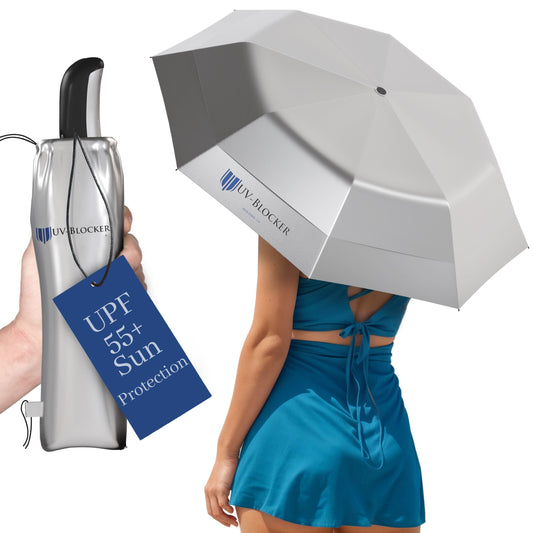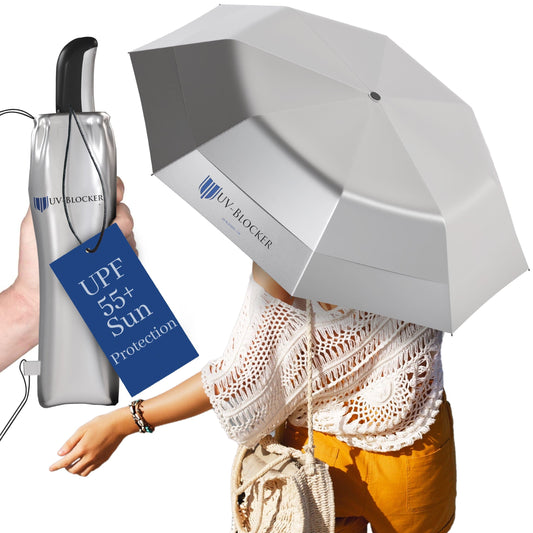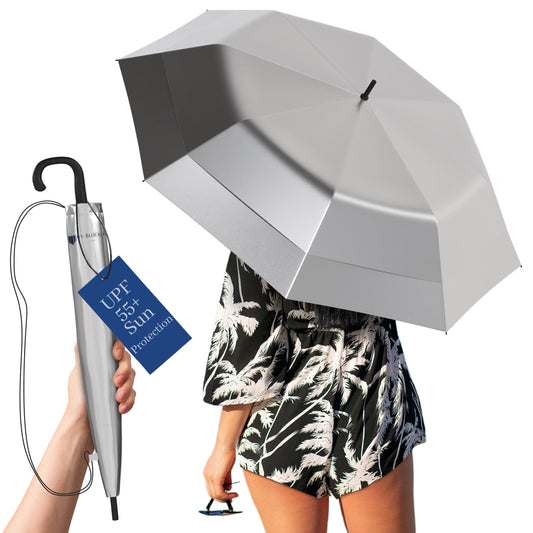Are you aware of how dangerous the sun can be on your skin?
The sun radiates UVA and UVB rays that cause damage to your body, both long-term and short-term exposure.
Exposure to sunlight is the main culprit in premature aging of the skin, as well as many other health problems such as wrinkles, sun spots, inflammation, age spots, and even cancer.
This is bad news to anyone who loves being in the sun, especially those who do not live in warm areas, and want to make the most of the nice weather.
So, how can you protect yourself?
In this article, we will tell you what to know about the dangers of the sun, and how to prevent it from damaging your skin permanently.
Let's get into it.
The Dangers Of The Sun
We have all heard about the dangers of the sun, probably when we were younger and our parents would have us wear sunscreen.
Those who have been sunburned in the past know how uncomfortable and painful sunburn can be.
It is a part of life that most people will experience at some point in their lives.
Unfortunately, enough people are not aware of the long-term effects of excessive exposure to sunlight.
The biggest danger of being caught in direct sunlight for too long is the development of melanoma, which is a form of skin cancer.
Melanoma is one of the deadliest forms of skin cancer, and accounts for more than 75 percent of the deaths associated with this type of cancer.
Other types of skin cancers include basal cell carcinoma and squamous cell carcinoma.
Although these cancers do not pose as significant a health risk as melanoma, they still require early detection and treatment if caught before spreading.
Other dangers that can be caused by the sun are cataracts, premature aging, damage to the retina and damage to DNA.
Knowing And Understanding Your Skin Type
Anyone who has ever visited a sunbed salon will know that, on your first visit, you will usually get asked what skin type you have.
According to a scale known as the Fitzpatrick skin type scale, there are 6 skin types.
Your skin phototype will depend on how much melanin pigment is in your skin.
In other words, it depends on whether you tan easily, or whether you burn easily, when exposed to sunlight.
The 6 skin types are as follows:
- Pale skin, light eyes, and blonde/red hair (always burns and never tans)
- Fair skin, light eyes (burns very easily, tans sometimes)
- Darker white skin (tans after burning)
- Light brown skin (burns sometimes, tans easily)
- Brown skin (burns rarely, tans very easily)
- Dark brown or black skin (never burns, always tans)
By knowing where you fit on the Fitzpatrick skin type scale, you can roughly work out how long you need to spend in the sun before getting burnt.
For example, if you are a pale-skinned person with light hair and blue eyes, then you should be careful about spending too much time in the sun without protection.
If you are a dark-skinned person with darker hair and brown eyes, then you can spend longer in the sun without having to worry.
However, it does not matter how dark your skin is: if you are in direct sunlight for too long, and too often, you could still suffer from sun damage.
This is because the UV rays penetrate deep into the layers of your skin, even though they may only reach the top layer.
Tips To Staying Safe In The Sun

No matter whether your skin is very dark or very light, you should still be cautious when exposing yourself to the sun.
The following tips will help protect your skin against harmful UVA and UVB rays.
Avoid Spending Too Much Time In The Sun (Especially During Peak Hours)
This is the easiest way to stay safe in the sun, although it is not the most preferred: the best way to avoid the dangers of sun rays is to simply stay out of the sun.
The sun is usually at its brightest and strongest between the hours of 10am and 3pm.
Of course, some areas of the world are sunnier than others, therefore you are going to find that the times at which you want to go outside vary throughout the year.
For example, during summer months, the sun is generally at its peak around midday, whereas during winter months, the sun is at its peak later in the day.
Only you will know how hot the sun is when you are out in it, therefore you will need to judge the heat for yourself.
If you find yourself feeling uncomfortable, you should either find a shady area to rest, or sit inside.
You would also benefit from using an umbrella, parasol or shade cloth in order to shield yourself from the sun's damaging rays.
Wear Suitable Clothing For The Weather
Another way to protect yourself from the sun is by wearing suitable clothes for the weather.
Of course, you do not want to leave the house wearing thick sweaters and heavy coats if the temperature is reaching 50ºF: this can lead to overheating, and in severe cases, can cause death.
However, this is why it is important to dress appropriately for the weather.
If it is sunny but cool, take advantage of the shade: wear loose clothing such as shorts or skirts, so that you keep cool whilst avoiding overexposure to the sun's rays.
Also, make sure that your arms and legs are protected.
You should always invest in sunglasses, as they will protect your eyes from the sun's damaging UV rays.
You should also ensure that your clothing covers your face and neck properly, so that you do not get sunburns here.
Additionally, consider wearing a hat: hats provide shade and cover up any exposed areas of your head, ensuring that you remain comfortable and covered.
A hat will also help keep your entire face in the shade.
Always Wear Sunscreen!
Here is the obvious point that you were waiting for.
Although this is something that some people would prefer to avoid, we cannot stress how important it is to wear sunscreen when you are exposed to the sun.
Sunscreens work by blocking the penetration of both UVA and UVB radiation into the skin.
They come in many different forms, including creams, lotions, and sprays.
There are different strengths of sunscreen that can be purchased, depending on your own skin type.
If you have particularly pale skin and light hair/eyes, you should look at covering yourself in a stronger sunscreen.
As long as you continue to lightly apply sunscreen throughout the day, you can rest easy knowing that your skin will be kept safe from the harmful effects of the sun.
Although, sunscreen is not a complete solution to protecting against the sun; it is highly recommended that you use other methods alongside it such as protective clothing and hats.
Final Thoughts
In conclusion, the best ways to protect yourself from the sun's harmful rays are to keep covered, wear sunscreen, and avoid long term exposure.
The most effective method of protection is to combine these three factors together, which allows you to enjoy all the benefits of spending time outdoors without putting your life or health at risk.
It is essential that you educate yourself about what the sun does to your body, and understand the signs and symptoms of excessive sun exposure.
Once you have found out more about the risks involved with sun damage, you can then decide whether you need to put measures in place to reduce them.
We hope you found this article useful.








